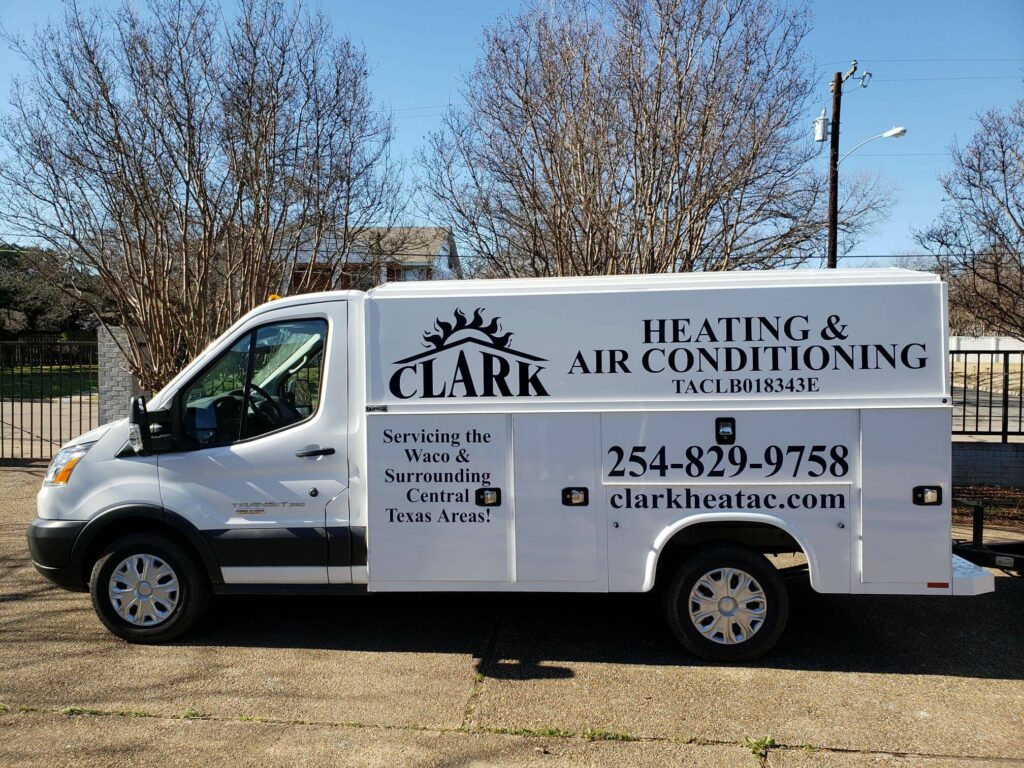Resources
HVAC System Basics
Get the basics about HVAC systems so you can make an educated decision. We review general heating and cooling principles to help you understand your system before and after you make a purchase.
Repairing vs. Replacing Your Heating/Cooling System – Use Clark Heating & Air Conditioning’s FREE HVAC System Repair or Replacement Questionnaire Tool!
A good choice for warmer regions, an air conditioner and air handler system is one of the many options for a matched system.
- Air Conditioner – Connected to the inside cooling coil, the compressor pumps refrigerant back and forth, extracting heat and moisture from the indoors. It transfers the heat to the outdoors. Warm indoor air is blown over the indoor cooling coil, then is cooled and distributed throughout your home.
- Air Handler – Matched in capacity and efficiency rating with the air conditioner, air handlers circulate conditioned air throughout your home. An air handler contains an inside coil and a blower fan, with the additional possibility of an auxiliary electric strip heater. Air handlers are available with single- or variable-speed motors. Variable-speed models are known for soft starts, high humidity control features and 12 selectable levels of airflow capacity, as well as the enhanced comfort mode.
- Air Cleaner – An integral part of a home comfort system, filtering dust and pollutants out of the air you breathe, and keeping your rugs and home furnishings cleaner as well. Reduced pollen, dust, pet dander, smoke, etc., could help reduce allergy and asthma discomfort. Air filtration systems can be up to 99.98% effective.
- Thermostat – The control center for your home comfort system. Digital, programmable thermostats give you precise temperature control and allow you to program your heating and cooling requirements depending upon your daily activities and schedule.
Used in many regions, an air conditioner and furnace system is one of the many options for a matched system.
- Air Conditioner – Connected to the inside cooling coil, the compressor pumps refrigerant back and forth, extracting heat and moisture from the indoors. It transfers the heat to the outdoors. Warm indoor air is blown over the indoor cooling coil, where it is cooled and then distributed throughout your home.
- Indoor Cooling Coil – To deliver the highest system efficiency, performance and climate control, an indoor cooling coil must be matched in size and rated with your air conditioner.
- Furnace – Many furnaces are uniquely designed to provide maximum heat with minimum fuel usage. And they think for themselves. Key furnace control functions are integrated into one microelectronic system that monitors the thermostat and gas valve, ensuring precise temperature control.
- Air Cleaner – An integral part of a home comfort system, filtering dust and pollutants out of the air you breathe, and keeping your rugs and home furnishings cleaner as well. Reduced pollen, dust, pet dander, smoke, etc., could help reduce allergy and asthma discomfort. Air filtration systems can be up to 99.98% effective.
- Humidifier – By providing the right amount of moisture and preventing dry air conditions, a humidifier can help alleviate allergy symptoms and dry skin, and also reduce static electricity.
- Thermostat – The control center for your home comfort system. Digital, programmable thermostats give you precise temperature control and allow you to program your heating and cooling requirements depending upon your daily activities and schedule.
An air conditioner, as part of a central heating and cooling system, draws heat energy out of the house and transfers it to the outside air.
WHAT IT IS
An air conditioner can change the temperature, humidity or general quality of the air. More specifically, an air conditioner makes your home cooler, by drawing heat energy out of the house and transferring that heat to the outdoors, then replacing the air inside your home with cooler air.
HOW IT WORKS
The air conditioner in a central heating and cooling system provides cool air through ductwork inside your home, by providing a process that draws out the warm air inside, removing its heat. In a split system, the compressor condenses and circulates the refrigerant through the outdoor unit, changing it from a gas to a liquid. The liquid is then forced through the indoor evaporator coil or cooling compartment. The indoor unit’s fan circulates the inside air to pass across the evaporator fins. The evaporator’s metal fins exchange the thermal energy with the air around it. There, the refrigerant turns from liquid into vapor, removing any heat from the surrounding air. As the heat is removed from the air, the air is cooled and blown back into the house.
From that point, the condenser or outdoor unit then turns the refrigerant vapor back into a liquid, removing any heat. By the time the fluid leaves the evaporator again, it is a cool, low-pressure gas, eventually returning to the condenser to begin its trip all over again. This process continues again and again until your home reaches the cooling temperature you want, as programmed and sensed by your thermostat setting.
Ductless systems connect an outdoor unit with an indoor unit to heat or cool one specific zone of a home without the use of ductwork.
COMPONENTS OF A DUCTLESS SYSTEM
Installing a ductless system is not only easy, but it allows for flexibility in where you deliver heating and cooling in your home without the use of ductwork. An outdoor unit is placed outside your home–often at ground level, but not always–and is connected to an indoor unit by small cables and a refrigerant line through a hole in the wall. The indoor unit is typically mounted high on the wall of the room and can be pre-set to run automatically or be adjusted by a remote control.
MINI-SPLIT VERSUS MULTI-SPLIT
The mini-split ductless system controls one room or zone by connecting one outdoor unit to one indoor unit. A multi-split ductless system can connect one outdoor unit to up to five indoor units—depending on the indoor and outdoor model—letting you control the heating and cooling in several zones or rooms independently of each other.
WHERE DUCTLESS IS NEEDED
A ductless system is a great solution for homes without a central heating/cooling system or when a room is added onto a house or an attic is converted to living space. Instead of extending the home’s existing ductwork, a ductless system can provide efficient heating and cooling at a lower operational cost.
Common in the South and warm, humid areas, a heat pump and air handler system is one of the many options for a matched system.
- Heat Pump – Unlike a furnace, a heat pump doesn’t burn fuel to make heat. It simply uses electricity to move heat from one place to another. A heat pump is an energy efficient way to cool your home in the summer and heat it in the winter.
- Air Handler – Matched in capacity and efficiency rating with the heat pump, air handlers circulate conditioned air throughout your home. An air handler contains an inside coil and a blower fan, with the additional possibility of an auxiliary electric strip heater. Air handlers are available with single, multi or variable-speed motors. Variable-speed models are known for soft starts, high humidity control features and 12 selectable levels of airflow capacity, as well as the enhanced comfort mode.
- Air Cleaner – An integral part of a home comfort system, filtering dust and pollutants out of the air you breathe, and keeping your rugs and home furnishings cleaner as well. Reduced pollen, dust, pet dander, smoke, etc., could help reduce allergy and asthma discomfort. Air filtration systems can be up to 99.98% effective.
- Thermostat – The control center for your home comfort system. Digital, programmable thermostats give you precise temperature control and allow you to program your heating and cooling requirements depending upon your daily activities and schedule.
Common in the South and warm, humid areas, a heat pump and furnace system is one of the many options for a matched system.
- Heat Pump – Unlike a furnace, a heat pump doesn’t burn fuel to make heat. It simply uses electricity to move heat from one place to another. A heat pump is an energy efficient way to cool your home in the summer and heat it in the winter.
- Indoor Cooling Coil – To deliver the highest system efficiency, performance and climate control, an indoor cooling coil must be matched in size and rated with your heat pump.
- Furnace – Furnaces are uniquely designed to provide maximum heat with minimum fuel usage. And they think for themselves. Key furnace control functions are integrated into one microelectronic system that monitors the thermostat and gas valve, ensuring precise temperature control.
- Air Cleaner – An integral part of a home comfort system, filtering dust and pollutants out of the air you breathe, and keeping your rugs and home furnishings cleaner as well. Reduced pollen, dust, pet dander, smoke, etc., could help reduce allergy and asthma discomfort. Air filtration systems can be up to 99.98% effective.
- Humidifier – By providing the right amount of moisture and preventing dry air conditions, a humidifier can help alleviate allergy symptoms and dry skin, and also reduce static electricity.
- Thermostat – The control center for your home comfort system. Digital, programmable thermostats give you precise temperature control and allow you to program your heating and cooling requirements depending upon your daily activities and schedule.
The heat pump is effective in many geographies, but especially in the southern United States.
In all electric applications, the heat pump may consume less energy than an electric furnace or air handler with an added electric heater accessory. Why? Because it can deliver the same amount of BTUs as electric heaters using less electrical input. In moderate climates the savings that natural gas yields may not be as advantageous as in colder climates, since there is less frequent use of the furnace in milder climates. Of course, the heat pump can be matched with a gas furnace where preferred. The heat pump is effective by itself down to temperatures around 25 to 30 degrees Fahrenheit. At that point, either a gas furnace or an air handler with supplemental electric heat will kick in and help heat your home.
To determine which system would serve your specific needs best, one of our trained specialists can perform a load calculation on your home and then estimate the cost of operation for the different combinations of equipment.
A humidifier adds water vapor to the air to increase humidity.
WHAT IT IS
A humidifier is a machine that can be added to any central heating and cooling system to monitor the humidity levels in a home and increase humidity when needed.
HOW IT WORKS
The humidifier unit uses a humidity-sensing control that cycles the humidifier on and off and a water panel that adds water vapor to the circulated air when needed. Relative humidity is the amount of moisture in the air expressed as a percentage of the maximum amount that the air is capable of holding at a specific temperature. In dry air conditions, the sensor tracks that percentage and adjusts the amount of added water vapor, giving your skin the moisture it needs and helping to keep any personal belongings, such as wood floors, furnishings, and keepsakes, from drying out. In essence, it’s one more way to make your home more comfortable all year long.
It’s important to install the right matched system size for your home, depending on a number of factors.
When it comes to your heating and air conditioning system, bigger isn’t always better, and smaller isn’t always more economical.
THE WRONG SYSTEM SIZE COULD COST YOU
A system that is too large will cool or heat your house quickly, but you still may not feel comfortable. That’s because it will satisfy the temperature setting on your thermostat before it can adequately remove sufficient moisture from the air—which is what makes you feel so sticky and uncomfortable in summer. What’s more, the stress of short cycling (too many starts and stops) will shorten the life of your equipment and increase your heating and air conditioning bills.
A system that is too small just cannot get the job done. The air conditioner will run constantly in the summer and the furnace will do the same in winter, which may overtax your system and increase your energy consumption.
CONSULT YOUR CLARK HEATING & AIR SPECIALIST
In most homes across the country, systems are in fact too large. And an oversized system not only makes it more difficult to control your comfort levels, it costs you money, because you’re essentially paying to heat or cool space that isn’t even there. That’s why a properly completed load calculation is so important. Our trained specialists can determine the correct system type and size for your home by doing a room-by-room load calculation. This heat loss/heat gain analysis is the best indicator of the correct system size and takes into consideration such critical factors as:
- Climate
- Number of windows and type of window treatments
- Insulation and ductwork
- Building materials and roof construction
- Skylights and fireplaces
- Ceiling heights
- The number of people in your home
To qualify for ENERGY STAR requires heating and cooling units to meet or exceed minimum efficiency ratings. The minimum efficiency required by the EPA for ENERGY STAR recognition includes: air conditioner and heat pump units with a SEER of 14.5 or above, 12 EER, or HSPF of 8.2 or above; gas furnaces with an AFUE of 90% or above.
Many factors can influence the potential savings on your energy consumption, including efficiency rating, lifestyle and having the right-sized system for your home.
When properly selected, higher efficiency matched systems give you improved comfort at reduced operating costs by using fewer energy resources. With a proper load calculation for the right-sized system and one of many high-efficiency products that meet or exceed ENERGY STAR guidelines, you can keep your utility bills down and reduce energy costs.
EFFICIENCY RATING
Remember that the higher the efficiency rating, the greater the energy savings. All split system air conditioner and heat pump matched systems with a SEER of 14.5 or above, 12 EER, or HSPF of 8.2 or above and all gas furnaces with an AFUE of 90% or above meet or exceed the minimum efficiency required by the EPA for ENERGY STAR recognition.
We help you identify higher-efficiency products with an ENERGY STAR logo on the product’s nameplate.
PROPER LOAD CALCULATION
Another vital step to getting a more efficient matched system for your home is to have one of our trained specialists conduct a load calculation. Most homes today are heated and cooled by units that are too big for the home—others are too small. When an air conditioner or heat pump system is not the proper size (capacity) for a home, an array of problems can result. Temperatures might be uneven. Units might not run long enough to properly control humidity. You may have more maintenance problems over time. And the money you think you might be saving may be reduced, because with units that are too big, you’re essentially paying to heat or cool space that isn’t there.
Along with a proper load calculation from out trained specialists – who accurately calculates the right size system for your home – we carry all products in a variety of capacity sizes to make sure that each one works as intended.
THE BENEFITS OF CONSERVING ENERGY
Household energy use contributes to air pollution, including 20% of all U.S. emissions of carbon dioxide. It also accounts for 26% of all U.S. emissions of sulfur dioxide and 15% of nitrogen oxides. By reducing your personal energy use, using more energy-efficient appliances and heating and cooling equipment, and constructing more energy-efficient homes, we can reduce pollution and save energy at the same time.
REGULAR SEASONAL MAINTENANCE
Have one of our trained specialists perform preventative maintenance before the summer cooling and winter heating seasons begin. Contact Us to check your system! This will increase the life of the system, improve energy efficiency, reduce pollutants and save money.
A dirty furnace filter can restrict airflow and increase energy use in your home. Keeping your furnace clean, lubricated and properly adjusted can save about 5 percent on heating costs. To increase the efficiency of your furnace, replace or clean filters once a month during operating seasons.
If you have any questions or would like to speak with a Clark Heating and Air Conditioning representative regarding our products or services, please Contact Us or give us a call at (254) 829-9758.

We Service ALL Brands, including…
















